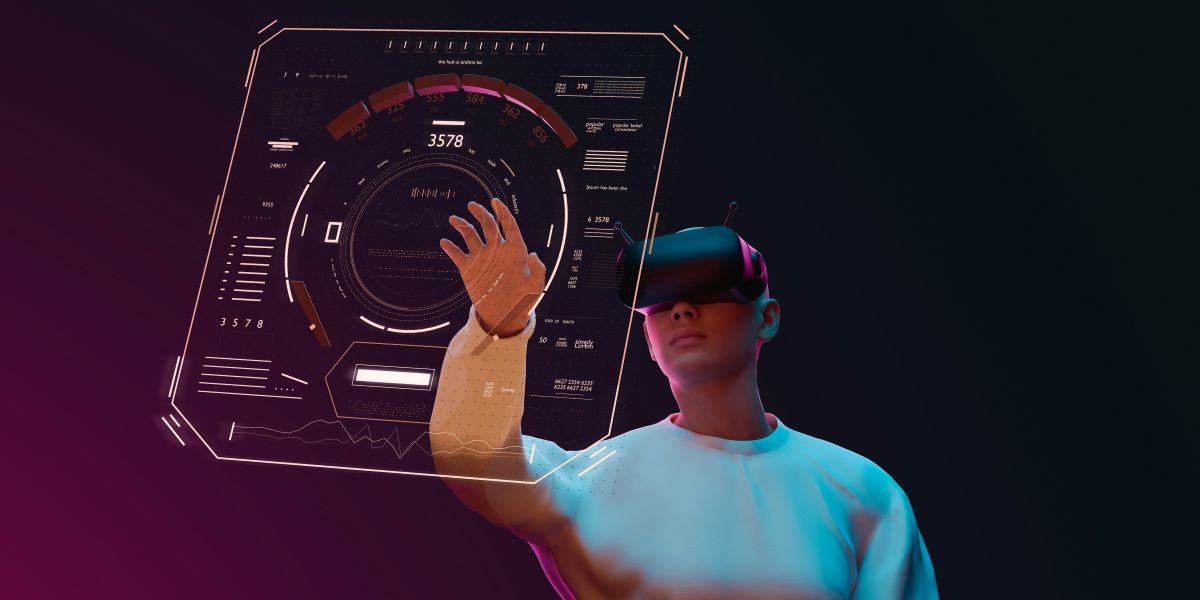In the last two years, immersive technology has grown from a hobbyist’s endeavor to a significant force with the potential to reshape industries, consumer experiences, and the future of innovation. From virtual reality (VR) to augmented reality (AR) to mixed reality (MR), these emerging technologies are beginning to change the way we interact with the digital world, offering new possibilities in education, healthcare, entertainment, manufacturing, and beyond. As immersive technologies advance, they could transform innovation in ways that were previously difficult to envision.
What is Immersive Technology?
Immersive technology refers to technologies that create or enhance interactive simulated environments, often giving users a highly engaging or realistic experience. Immersive technologies typically involve a convergence of visual, auditory, and sensory inputs to enable interactions that may not be easily achieved through conventional media. The most widely recognized forms of immersive technology are Virtual Reality (VR), which simulates a completely virtual environment; Augmented Reality (AR), which adds digital information to the real world; and Mixed Reality (MR), which blends aspects of VR and AR to enable interaction between virtual and real-world objects.
As these technologies continue to develop, their potential applications appear to be expanding. In various sectors, immersive technology is increasingly being explored to address challenges and explore new solutions, often with promising implications for industry transformation.
Potential Revolution in Healthcare Innovation
Among the most promising areas where immersive technology is showing significant promise is healthcare. Aspects of medical training through to patient care are being explored with these technologies, potentially opening doors to new innovations.
For example, Virtual Reality is being tested in medical schools so that practitioners and students can simulate surgery and other procedures in a safe, controlled environment. VR simulations may offer the advantage of repetition, allowing trainees to practice challenging processes without putting patients at risk. This approach could increase the skill level of practitioners while potentially reducing errors in real-world scenarios.
Moreover, AR in surgery is being explored as a tool to project crucial information (e.g., imaging data) onto the patient’s body during procedures. Early studies suggest real-time guidance might reduce errors and enhance precision. Additionally, immersive technologies are being investigated for mental health management. VR, for instance, is being used experimentally in exposure therapy to help patients address phobias, PTSD, and anxiety disorders by gradually exposing them to controlled virtual environments.
Evolving Learning and Education
Immersive technologies are also beginning to influence education, offering interactive and immersive learning experiences that were not easily achievable before. VR, for instance, is being tested for virtual classrooms, field trips, and experiences that allow students to explore subjects like history, biology, and geography more dynamically. Instead of relying solely on textbooks, students may observe concepts firsthand, potentially leading to deeper engagement.
Additionally, AR is being integrated into traditional classroom settings. Students can sometimes interact with virtual objects superimposed on the real world using smartphones or AR glasses. Anatomy students, for example, might use AR to view 3D models of the human body, offering a more interactive alternative to textbooks.
These interactive lessons could cater to different learning styles, whether through sight, sound, or movement. Such approaches may accelerate the learning process, though further research is needed to confirm their long-term effectiveness.
Enriching Consumer Experiences in Entertainment
Another area where immersive technology is making an impact is entertainment. The entertainment industry has seen notable changes with VR, enabling consumers to explore virtual worlds with greater immersion than before. While still evolving, these innovations are helping gamers engage with content in previously unimaginable ways.
However, privacy and security concerns remain an important consideration, particularly with AR and VR technologies, which often require personal data. Ensuring that immersive platforms prioritize user privacy will likely be crucial for widespread adoption. An attorney specializing in XR law can advise organizations on protecting customer data and complying with regulations.
Beyond gaming, VR and AR are being explored for new forms of entertainment. VR, for example, could allow moviegoers to experience films from a first-person perspective. AR is also being tested at live events, where fans might overlay interactive content onto performances via AR glasses or phones.
In retail, AR is starting to influence the consumer experience, allowing shoppers to visualize how apparel or furniture might look before purchasing. This blending of physical and digital experiences could create more engaging and personalized shopping experiences.
The Expanding Role of Immersive Tech: Manufacturing and Beyond
Beyond healthcare, education, and entertainment, immersive technology could also play a role in manufacturing, architecture, and engineering. In manufacturing, AR and VR are being tested to streamline design, prototyping, and training. Designers and engineers might use VR to inspect 3D product models, simulating functionality before investing in physical prototypes. This approach could save costs and possibly speed up development.
Similarly, AR is being explored to assist shop floor workers. With AR glasses, laborers could receive real-time instructions or blueprints, potentially improving accuracy and efficiency. This integration of humans and machines might reduce errors and boost productivity.
In architecture and construction, immersive technology is being used to refine design and planning. With VR, architects can walk through 3D building models, making adjustments before construction begins. AR is also being tested to overlay plans onto real-world sites, helping workers follow designs more accurately.
Looking Ahead
Immersive technologies are no longer speculative—they are becoming part of our reality, influencing how we live, work, and play. As they evolve, their applications are expected to grow, offering new opportunities for innovation. Whether in healthcare, education, entertainment, or industry, immersive technologies could play a key role in shaping the next wave of advancements.
As adoption increases and technology improves, their potential to drive progress across society may expand, making them valuable tools in the ongoing pursuit of innovation.
Published by Anne C.

















